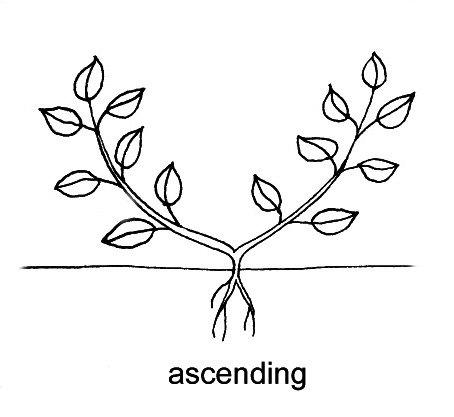|
|
 |
Key to LiliumView taxon page for Lilium
(For a list of species in Lilium, use the above link.) Jepson Manual glossary definitions can be seen by moving your cursor over words underlined with dots. 1. Flower nodding (between pendent and spreading) to erect  Upright; vertically oriented. ; perianth parts recurved  Gradually curved downward or backward. but not reflexed  Abruptly bent or curved downward or backward. (except Lilium maritimum) 2. Perianth ± white, often aging pink, lavender, or purple; flowers nodding to erect 3. Perianth parts 4.2–6.6 cm; flower ascending  Curving or angling upward from base, or about 30-60 degrees less than vertical or away from axis of attachment. to erect; NW, SnFrB ..... L. rubescens 2' Perianth yellow to red or pink; flowers nodding to ascending 5' Perianth ± red, orange, or pink (pale yellow), parts <= 5 cm; s NCo, KR, n&c SNH, n CCo 6' Leaf 3–18 cm, not obviously glaucous, margins generally not wavy; ± wet or seasonally inundated places; s NCo, n&c SNH, n CCo 7. Perianth red or red-orange abaxially, adaxially (except base green), tips reflexed or rolled; flower nodding (spreading); fruit 2.4–4.1 cm; s NCo, n CCo ..... L. maritimum 7' Perianth light orange to red (± pink) on distal 40%, lighter near base, sometimes uniformly light orange (yellow), abaxially paler, tips ± recurved; flower nodding to ascending; fruit 1.5–2.7 cm; n&c SNH ..... L. parvum 1' Flower pendent (sometimes some nodding); perianth parts reflexed 8' Perianth yellow to red 9. Plant of ± dry places; perianth yellow or orange; bulb erect to ascending 10' Pistil 4.5–7.1 cm; perianth parts generally 5.6–9.5 cm; anthers 11–19 mm; s CaRH, n SNH, s CW, SW ..... L. humboldtii 9' Plant of ± moist places; perianth yellow to ± red; bulb spreading  Oriented more or less perpendicularly to the axis of attachment; often, more or less horizontal. 12. Perianth ± uniformly yellow, orange, or yellow-orange (green at base) 13. Flower ± fragrant; anthers 3–6 mm, magenta or dull red; pistil 2.5–3.5 cm; fruit 1.5–3 cm; not clonal; c&s SNH ..... L. kelleyanum 12' Perianth ± 2-toned, with green, yellow, or orange centers, darker orange or red tips 14. Perianth red to maroon (orange), center green to yellow, abaxially green on basal  At or near the base of a plant or plant part. Especially said of leaves clustered near the ground or of a placenta confined to the base of an ovary. 40–50%, parts 4.3–8.1 cm; filaments ± parallel; rhizome  1. In seed plants, stem that is often elongate, more or less horizontal, usually underground; distinguished from roots by bearing of leaves, leaf scars, axillary buds, etc. 2. In ferns, stem that is located underground, embedded in leaf litter, on rocks or in rock crevices, or on trees or tree branches, often scaly or hairy; distinguished from roots by bearing of fronds (roots rarely bear fronds), and their greater diameter. unbranched; n NCo ..... L. occidentale 14' Perianth yellow to orange, tips redder, abaxially green only on basal ± 20%, parts 3.4–10.4 cm; filaments not parallel; rhizome often branched; CA-FP ..... L. pardalinum (most) 15. Perianth parts 5.9–10.4 cm; generally in large clones; anthers 11–22 mm, leaves generally ± elliptic  In the shape of a flattened circle or ellipse; wider than linear ; CA-FP ..... subsp. pardalinum 15' Perianth parts 3.4–8.3 cm; generally in small clones; anthers 5–18 mm, leaves generally ± elliptic to ± linear  Elongate, with nearly parallel sides; narrower than elliptic or oblong. ; KR, s NCoRO, CaR, n SNH 16' Leaf ± elliptic, length 3–17 × width; e KR and elsewhere
Please use this Google Form for Contact/Feedback
Citation for the whole project: Jepson Flora Project (eds.) . Jepson eFlora, https://ucjeps.berkeley.edu/eflora/ [accessed on ]
Citation for an individual treatment: [Author of taxon treatment] [year]. [Taxon name] in Jepson Flora Project (eds.) Jepson eFlora, [URL for treatment]. Accessed on .
We encourage links to these pages, but the content may not be downloaded for reposting, repackaging, redistributing, or sale in any form, without written permission from The Jepson Herbarium.
|
|
 |

